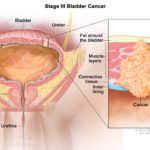
What Are Absence Seizures?
Myoclonic Seizures: Causes, Treatment, and More
The beneficial effects of the modified Atkins Diet (MAD) are observed in four types of seizures. Absence seizures are brief episodes of unresponsiveness.
Petit mal (absence) seizures are brief lapses of consciousness (10–30 seconds) characterized by staring or unresponsiveness due to generalized 3 Hz electrical activity in the brain. These usually last only a few seconds and are most common in children aged 4 to 14. While they seem mild, they can greatly affect learning and daily activities if not properly managed.
What Are Absence Seizures?
Absence seizures, a type of generalized seizure, cause someone to briefly stop what they’re doing and appear to stare into space. These episodes typically last 10 to 15 seconds, and the person is unaware of what’s happening.
Although they are not generally life-threatening or physically harmful, frequent seizures can disrupt school, work, and everyday routines.
Symptoms of Absence Seizure
Absence seizures can be hard to identify because they’re short and may resemble normal behavior or other seizure types. Symptoms include:
- Blank staring
- Pause in movement or activity
- Lip-smacking or chewing motions
- Fluttering eyelids
- Mild facial twitching
- Abnormal behavior for their age followed by no memory of the seizure
Types of Absence Seizures
Typical Absence Seizures
- There is a Sudden pause in activity
- A staring episode usually under 10 seconds
- Blank facial expression
Atypical Absence Seizures
- Slower onset may last up to 20 seconds
- More visible motor signs (blinking, chewing, hand movements)
- More common in people with developmental delays or other seizure types
Causes and Risk Factors
Absence seizures stem from abnormal brain activity, especially in thalamocortical circuits. They may be hereditary. Risk factors include:
- Gene mutations (e.g., GABRB3 gene)
- Ion channel dysfunction (channelopathies)
- Family history of epilepsy
- Sleep deprivation
- Not following medication
- Alcohol or stimulant use
- Other neurological conditions
Diagnosis of Absence Seizures
Proper diagnosis requires full medical assessment using:
- EEG: Detects abnormal brain wave patterns
- Bloodwork: Rules out infections or metabolic issues
- CT/MRI: Checks for structural problems
- Spinal Tap: If needed, analyzes spinal fluid for infection or inflammation
Treatment Options
Anti-seizure medications are typically used, tailored to the person’s age, seizure type, and health status. Common drugs include:
- Ethosuximide – usually the first choice
- Valproic Acid
- Lamotrigine
In some cases, combination therapy is necessary if multiple seizure types are involved.
How to Prevent Absence Seizures
Though not all seizures can be stopped, you can lower their frequency by:
- Taking medications as directed
- Getting enough sleep
- Sticking to a routine
- Managing stress through relaxation
- Eating a balanced diet
- Avoiding triggers (e.g., flashing lights, overheating, intense activity)
Living With Absence Seizures
For Children:
- Collaborate with teachers and school staff
- Create an IEP if necessary
- Encourage participation in appropriate activities
For Adults:
- Know state laws about driving with epilepsy
- Inform employers when safety is a concern
- Seek emotional support
Complications
While absence seizures are not usually harmful, they can cause problems if frequent or untreated:
- Missed learning in children
- Daily life accidents
- Emotional stress or stigma
- Could develop into other seizure types like juvenile myoclonic epilepsy
Many children outgrow absence seizures by adolescence, but some continue into adulthood or evolve into other types.
When to See a Doctor
Seek medical advice if you notice:
- Repeated “staring spells” or short lapses in awareness
- Teachers reporting daydreaming or inattention
- Any unusual movements or behaviors possibly indicating a seizure
Early diagnosis and treatment can make a big difference.
Key Takeaways
- Absence seizures are brief, sudden episodes
- Most common in ages 4–14 but can happen at any age
- Often mistaken for daydreaming
- Diagnosed via EEG and medical exams
- Controlled with medication and a healthy lifestyle
- Early care helps prevent learning issues and supports normal life
For more trusted oral health tips and advice, visit HealthCareTipsHub.com






